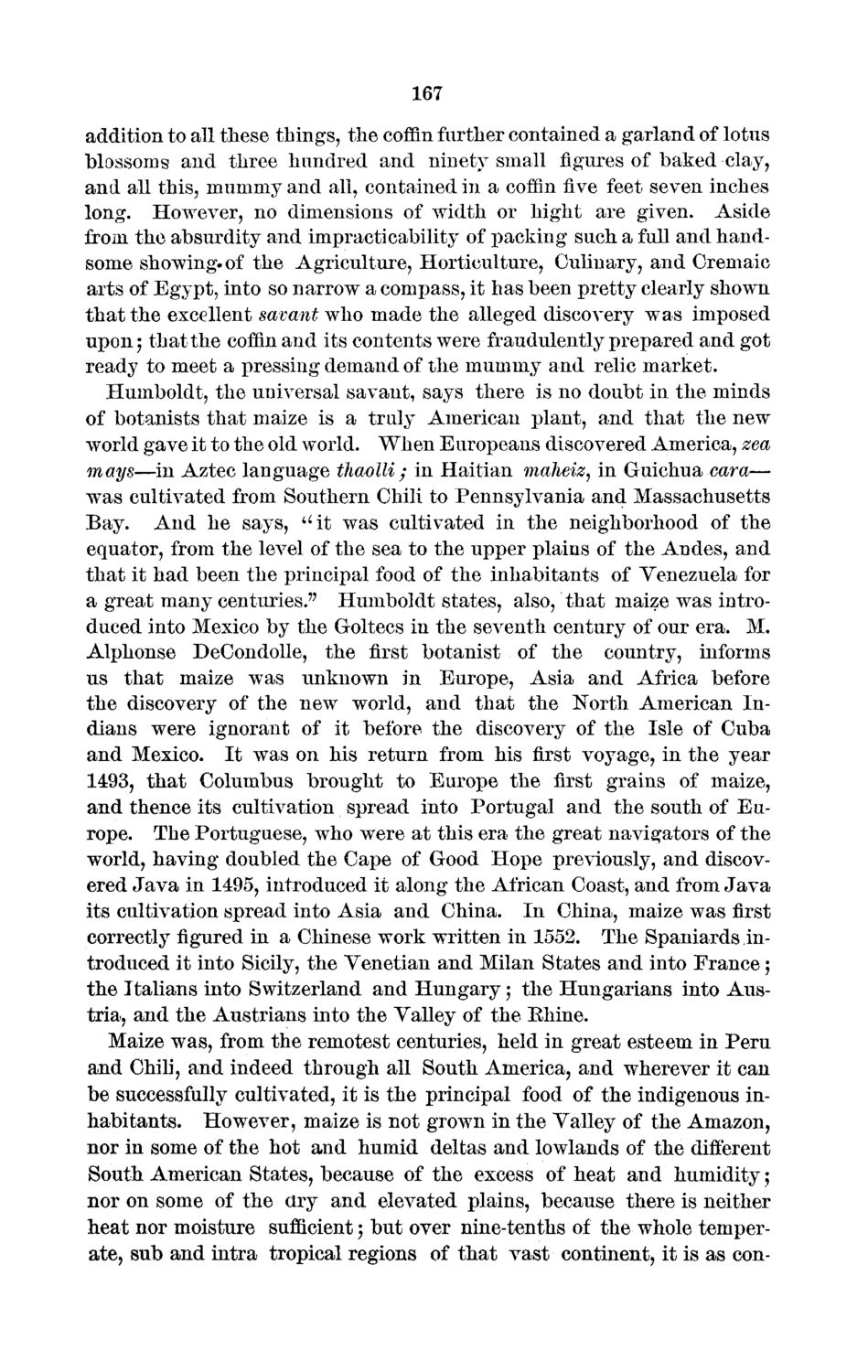| |
| |
Caption: Board of Trustees Minutes - 1872
This is a reduced-resolution page image for fast online browsing.

EXTRACTED TEXT FROM PAGE:
167 addition to all these things, the coffin further contained a garland of lotus blossoms and three hundred and ninety small figures of baked clay, and all this, mummy and all, contained in a coffin five feet seven inches long. However, no dimensions of width or hight are given. Aside from the absurdity and impracticability of packing such a full and handsome showing-of the Agriculture, Horticulture, Culinary, and Cremaic arts of Egypt, into so narrow a compass, it has been pretty clearly shown that the excellent savant who made the alleged discovery was imposed upon) that the coffin and its contents were fraudulently prepared and got ready to meet a pressing demand of the mummy and relic market. Humboldt, the universal savant, says there is no doubt in the minds of botanists that maize is a truly American plant, and that the new world gave it to the old world. When Europeans discovered America, zea mays—in Aztec language thaolli ; in Haitian maheiz, in Guichua cava— was cultivated from Southern Chili to Pennsylvania and Massachusetts Bay. And he says, u i t was cultivated in the neighborhood of the equator, from the level of the sea to the upper plains of the Andes, and that it had been the principal food of the inhabitants of Venezuela for a great many centuries." Humboldt states, also, that maize was introduced into Mexico by the Goltecs in the seventh century of our era. M. Alphonse DeCondolle, the first botanist of the country, informs us that maize was unknown in Europe, Asia and Africa before the discovery of the new world, and that the North American Indians were ignorant of it before the discovery of the Isle of Cuba and Mexico. It was on his return from his first voyage, in the year 1493, that Columbus brought to Europe the first grains of maize, and thence its cultivation spread into Portugal and the south of Europe. The Portuguese, who were at this era the great navigators of the world, having doubled the Cape of Good Hope previously, and discovered Java in 1495, introduced it along the African Coast, and from Java its cultivation spread into Asia and China. In China, maize was first correctly figured in a Chinese work written in 1552. The Spaniards introduced it into Sicily, the Yenetian and Milan States and into France; the Italians into Switzerland and Hungary ; the Hungarians into Austria, and the Austrians into the Yalley of the Ehine. Maize was, from the remotest centuries, held in great esteem in Peru and Chili, and indeed through all South America, and wherever it can be successfully cultivated, it is the principal food of the indigenous inhabitants. However, maize is not grown in the Yalley of the Amazon, nor in some of the hot and humid deltas and lowlands of the different South American States, because of the excess of heat and humidity; nor on some of the dry and elevated plains, because there is neither heat nor moisture sufficient 5 but over nine-tenths of the whole temperate, sub and intra tropical regions of that vast continent, it is as con-
| |